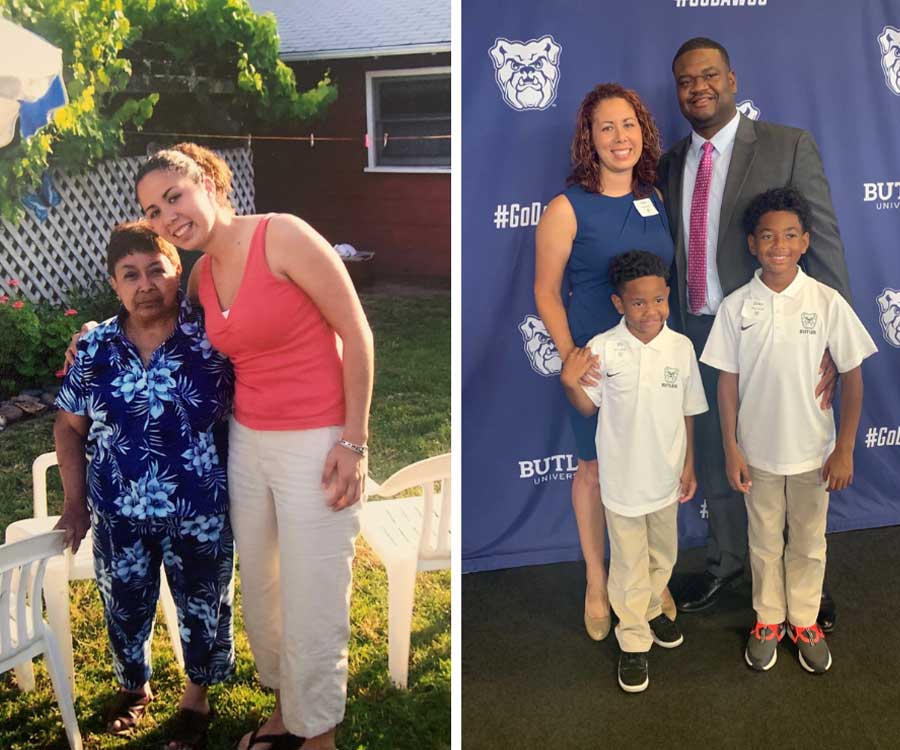Not From Here or There: My Journey in Racial Consciousness Development
by Sara Marshall, Senior Director of Talent
I am a third-generation Mexican-American, born in Sonoma, California, to a white father and a Mexican mother. My father traces his roots to England, Ireland, Scotland. On my mother’s side, my great-grandparents immigrated to the US from Mexico. My personal journey of finding pride in my heritage and connection to my Latina roots has been complicated.
Even at a young age, I came to understand and recognize the ways my family traded in aspects of their Mexican culture in search of safety and a perceived attainment of the American dream. My grandmother worked as a bilingual assistant in schools her entire life. Yet when my mother and siblings began school, my grandmother ceased speaking Spanish to her children at home. My grandmother is unfortunately no longer with us to ask her, but I often wonder if this adoption of English-first at the expense of their heritage and culture, an experience shared by numerous immigrant children, allowed my mother and her siblings to more easily navigate their school and the wider community in a deeply white area near Salt Lake City, Utah.
From an early age, I ascribed to whiteness, out of inevitability and societal pressures more than anything else. My family didn’t speak Spanish, we had white names, an Irish last name, and few connections to our Mexican roots beyond celebrating large holidays. Moreover, most of my friends were white. But all along I knew I was different. I wasn’t white enough to be “all the way white” but I also wasn’t brown enough to be Latina. I’ve since come to understand just how common walking this tightrope can be for second- and third-generation descendants of immigrants.
Two memories vividly capture this identity crisis for me, described elegantly by a phrase I recently heard a friend use that goes “Ni de aqui, ni de alla,” which translates to “not from here or there.”
In high school, my father encouraged me to apply for a Latino scholarship. Writing my essay, I recall struggling with the prompt that asked me what it meant to be Latino. I had spent my life trying to be as white as possible, trying to assimilate, trying to fit in. And as an honors’ student, I rarely interacted with other Latino students. My high school equated “Latino” with being poor, farming, and not doing well in school and placed us in classes according to this bias. What I did love was sports and my grandmother. So I focused my essay on making my family proud through my success in school and sports.
Well, I won. And immediately felt shame along with a burgeoning terror at the thought of attending the scholarship acceptance dinner. I didn’t speak Spanish. I would be exposed as an imposter. Undeserving.
Sure enough, walking out of the scholarship event, a fellow award winner approached me and said, “Thanks for taking money from someone who deserved it.” I was stunned, confused, and embarrassed. “Ni de aqui….” You aren’t from here. You aren’t Latina enough.
The second story comes from my college days. I arrived at my midwestern university ready to downplay my Mexican culture just like in high school. But my school, and its lack of diversity, had other ideas. I was featured in a lot of publications, a brown face diversifying the white sea, and found myself regularly asked to speak on behalf of the entire Mexican culture in my classes.
In this, I experienced a complete shift. During K-12, I was never enough. Now, I was the only. My university used my identity often. Senior year, as I was interviewing for my first post-grad teaching position, university staff introduced me as “our diverse candidate.” Not my name. Not who I actually was. Just how they saw me. “Ni de alla….” You aren’t from there.
These experiences shaped my journey, helping me understand what being a Mexican-American means to me and what it can mean to my family, now that I have built one of my own with my husband and sons here in Indianapolis. This new understanding means I’m investing in reclaiming my ancestral language that was slowly lost in a culture that devalued it. It’s also changed what I listen to, what I read, what I ask my mother and relatives.
More widely, it’s also changed the way I work. Families should not feel forced to assimilate. And students shouldn’t have to choose between their culture, their true selves, and the white culture that continues to pervade most schools. Whether it’s my role at The Mind Trust or my participation in the Indiana Latino Institute’s Latino Leadership Circle Fellowship, I continually ask myself how I can leverage my position and power to show up for the Latino community and work toward creating a more inclusive city – a city where Latino families and youth can embrace who they are without compromise.
I’m learning to lean into what I used to hide or downplay. I know “Ni de aqui, ni de alla,” doesn’t have to be permanent, doesn’t have to be the end of my story. No. It can instead be a beginning, an invitation to discover something about myself and my culture that might otherwise be lost.
Photo on left: Sara with her grandmother; Photo on right: Sara with her husband and two sons.


